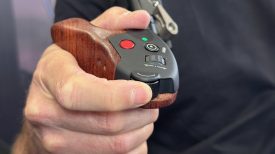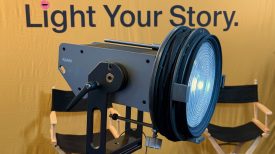By technical editor Matt Allard:
Color Reel – The House On Pine Street from GradeKC on Vimeo.
Creating a look or a feel to your project can totally change a persons perspective on what they are seeing. It is not often that you get to see how this is done behind the scenes. Taylre Jones from GradeKC put up a very nice example on Vimeo showing before and after examples of how he created a look for the film The House On Pine Street. The film was shot on a Sony F55 in 4K XAVC.
I caught up with Taylre to discuss why he put the examples up, how you go about creating a “look”, the difference between colour grading and colour correction and dealing with REC709 material compared to log and raw. Taylre also gives some great tips about how to approach the grading process and what are the first things you should do.
This from the DP of The House On Pine Street Juan Sebastian Baron: who posted a comment over at No Film School
This movie was an extremely low budget feature (very well produced however), shot on a very tight schedule with a skeleton crew. That said there was a really great deal of coordination between the directors, the production designer, and myself in order to build as much of the look into the sets as possible.
The film was shot on an f55 to 4K XAVC S-Log3. On set we were viewing the onboard Rec709-Type A LUT. We originally tested different workflows including RAW but settled on this as the most efficient and cost effective given our budget and our needs. The name of the game on this show was speed and efficiency and while I did experiment with making custom LUTS it became overly complicated (I was pulling my own focus and gaffing with a limited crew).
As far as the look on set, my philosophy was to get the 709 as close as possible to the final look with lighting and exposure and monitor the LOG signal that you see at the start of every correction to make sure we gave ourselves a lot of options. As much as I would love to take the time and make perfect images in camera, when you have radically changing lighting conditions, a lot of scenes to shoot each day, and very little time to make decisions, having the extra information to work with really makes a difference.
It is deceiving seeing the LOG images at the beginning of the correction and then comparing to the final images. On set the actors were seeing environments very similar to the finished grade. The LOG does show just how much information this camera can grab at 1250. This being done on a very tiny lighting budget (I think $1000 for the entire 18 day shoot) did mean that sometimes I did have to have a “fix it in post” mentality. I’m not ashamed of it, and I knew that with the f55 and the support of a skilled colorist, I could move quickly and make decisions that benefited the production.
The last thing that needs to be taken into account is this feature is composed of over a thousand shots, and Taylre gave extreme attention to detail to each one. That really is the bread and butter of a professional colorist, I like to think of it akin to the restaurant business, everyone can learn to make a really good dish but serving hundreds of them to demanding customers day in and day out is the mark of a true professional.
You can contact Taylre at taylrejones@gradekc.com





